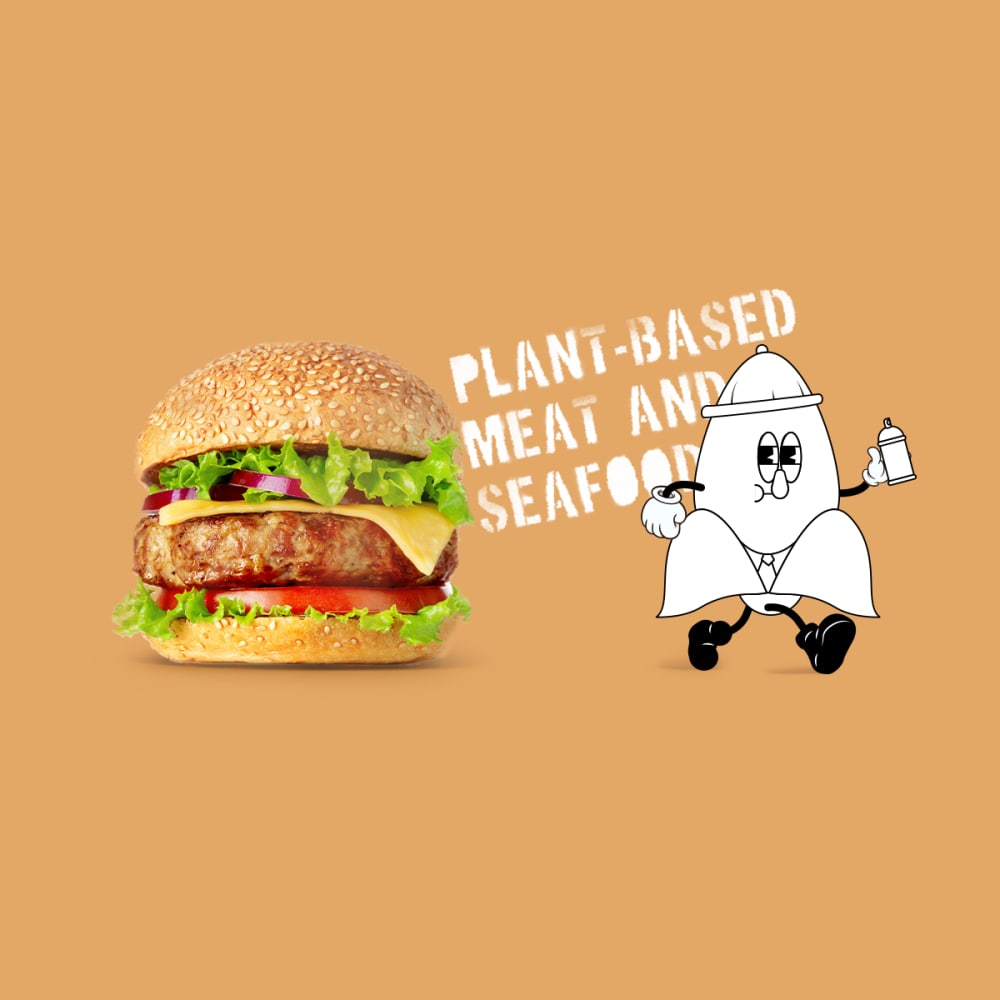The detectives discover vegetable proteins

Chapter 30
? Case overview: A client is interested in manufacturing vegetable proteins as ingredients in plant-based meat alternatives. She needs help in setting up the quality control of these vegetable proteins and she turns to the food detectives for advice. Will they be able to satisfy her requirements for speed and easy operation or will she be left looking for QC method alternatives for her plant-based meat alternatives?
Shallot Holmes looks nervously at Nancy Beef as he introduces their next case. A client, currently manufacturing plant-based meat alternatives is interested in manufacturing ingredients as well. Mainly, she plans to produce vegetable proteins as ingredients to create textures in plant-based meat substitutes. She needs help setting up the quality control of these vegetable proteins.
Nancy Beef, indeed, looks disgusted at all this talk about plants. They have already had a case on protein and fat determination in plant-based food! But Lieutenant Cornlumbo jumps at the opportunity to lead the case. He is, after all, a plant himself. He consults a resource on the development and manufacturing of vegetable proteins and begins sharing his findings.
He starts off by explaining that
Vegetable proteins are used as ingredients in all types of plant-based meat and seafood to mimic the fiber structure of meat.
Vegetable proteins could be used in combination with multiple textures to imitate typical meat characteristics, such as tendon, muscle or fat tissue. Vegetable proteins can also be used in a hybrid strategy in combination with actual meat to produce half-vegetable products.
Vegetable proteins are typically produced by wet extrusion, or high moisture extrusion, of plant food, such as protein-rich soy flour. The protein mass is mixed with water under high pressure and temperature to form a liquid, sticky mass, which is then passed through the extruder under rotation. As a final step, the nozzle of the extruder tube is cooled to solidify the protein mass into a material with firm, juicy, fleshy texture.
The quality of the final product mainly depends on physical factors, such as the friction and shear in the extruder, as well as process parameters such as pressure and temperature.
Lieutenant Cornlumbo finishes off his brief introduction and directly jumps into how to perform quality control of vegetable proteins.
| Processing Step | Quality Control Parameters |
|---|---|
| Entry control of raw materials | Determination of moisture content – ensures a batch is not too wet; that the protein content matches expected values; important for setting up next processing step |
| Marination and further processing | Moisture, protein, fat |
| End products | Moisture, protein fat; additional daily sensory tests are performed to monitor number of products, bite, mouthfeel and fibrous structure |
Because so many different parameters must be controlled and the client wants to make fast decisions, Lieutenant Cornlumbo suggests using NIR analysis for quality control of his vegetable proteins.
With NIR, the colour, moisture, protein and fat content of vegetable proteins can be measured simultaneously.
NIR systems are robust and easy to use, so once set up the client should have no problem with the operation. If a pre-calibration is available, the use of the instrument is simplified even further. But the detectives decide to create an NIR calibration set for their client just in case. They do so by:
- Collecting many samples for reference measurements of protein, moisture and fat content
- Analyze the samples with reference methods such as Kjeldahl and Soxhlet extraction
- Measuring the same samples with NIR
- Creating a calibration line based on the reference and NIR measurement results by using software for auto calibration available with their NIR system.
With the calibration set ready, they present their results to the client and she agrees to try out NIR technology for quality control. The client reports back a few months later that she is very happy with using NIR for monitoring quality parameters, as she obtains real-time data and does not need to wait for prolonged periods to get results from contract testing labs. She is able to make immediate decisions and save time and resources when unexpected values roccur.
To Nancy Beef’s great relief, the detectives have another case in the bag! She hopes they can move on to something more meaty next time around.